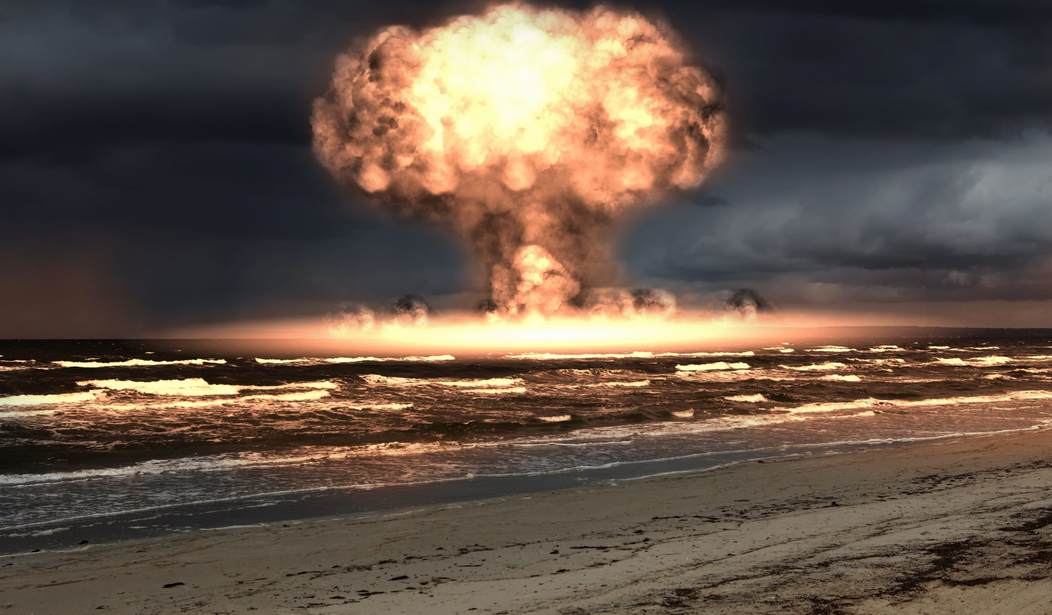In 2004, The Guardian reported on a Department of Defense climate-change report that would prove “hugely embarrassing” for President George W. Bush. The report predicted that climate change could be America’s greatest national security threat. Yet these climate-change predictions, like so many others, proved nearly the opposite of the truth. Among other things, the report predicted nuclear war, endemic conflict over resources, and European cities underwater by 2020.
None of these things happened.
“A secret report, suppressed by US defence chiefs and obtained by The Observer, warns that major European cities will be sunk beneath rising seas as Britain is plunged into a ‘Siberian’ climate by 2020. Nuclear conflict, mega-droughts, famine and widespread rioting will erupt across the world,” The Guardian reported. The report “predicts that abrupt climate change could bring the planet to the edge of anarchy as countries develop a nuclear threat to defend and secure dwindling food, water and energy supplies.”
“Disruption and conflict will be endemic features of life,” the Pentagon report concluded. “Once again, warfare would define human life.”
Among other things, the report predicted: severe drought and cold pushing Scandinavian populations southward in 2012; a “flood of refugees to southeast U.S. and Mexico from Caribbean islands;” conflict in the EU over food and water; Russia entering the EU in 2018; “migration from northern countries such as Holland and Germany toward Spain and Italy.”
By 2027, the report predicted “increasing migration to Mediterranean countries such as Algeria, Morocco, Egypt, and Israel.”
The decade of the 2010s saw the opposite of many of these predictions. Migrants from the Middle East are flooding into Europe — even Britain and Scandinavia — not the other way around. Britain does not experience a “Siberian” climate. Refugees are flooding to the U.S. through Mexico from South and Central America, not from the Caribbean or from Europe. Germany is dominating Europe economically, while Italy and Spain struggle, and migrants are flocking northward, not southward.
Perhaps most significantly, no nuclear war has taken place, despite the occasional missile launch from North Korea.
While The Guardian emphasized the nuclear war prediction, the DOD report did not specifically predict a full-fledged nuclear conflict. However, it did predict that climate change would make resources scarce. Scarce resources would result in war and nuclear proliferation would result in nuclear war.
The Pentagon report claimed that peace occurs when resources increase or when populations die off. “But such peaceful periods are short-lived because population quickly rises to once again push against carrying capacity, and warfare resumes.” In modern times, the casualties have decreased, but “all of that progressive behavior could collapse if carrying capacities everywhere were suddenly lowered drastically by abrupt climate change.”
As endemic warfare resumes, it will escalate to nuclear war, the report predicted. “In this world of warring states, nuclear arms proliferation is inevitable.”
This doomsday scenario has not come to pass, and is not likely to happen in the foreseeable future. Like so many dire predictions about resource scarcity before it, the report was eclipsed by human ingenuity.
Perhaps the most well-known doomsday forecast came in the 1960s, when Paul Ehrlich’s The Population Bomb predicted mass starvation due to dwindling resources. “India couldn’t possibly feed two hundred million more people by 1980,” he predicted in 1968. Since that prediction, India’s population has more than doubled, its wheat production has more than tripled, and its economy has grown nine-fold. India fed more than 200 million more people.
While Ehrlich was peddling his Chicken Little predictions, plant disease expert Norman Borlaug spearheaded research into new farming methods that supercharged agriculture and fed the people whom Ehrlich predicted would starve. Borlaug’s dwarf wheat resisted a wide spectrum of pests and diseases and produced two to three times more grain than traditional varieties. In Pakistan, wheat yields rose from 4.6 million tons in 1965 to 8.4 million tons in 1970. In India, they rose from 12.3 million tons to 20 million tons.
Borlaug arguably saved more lives than anyone else in history, and he demonstrated the key principle that science, human ingenuity, and free markets can stave off the doomsday scenarios of gloomy “experts.”
In the 2010s, humans in general became richer, and started using more sustainable methods. Britain now uses less in terms of resources than it did in 2000, even as the population has grown. The U.S. has become energy independent thanks to the shale oil revolution — the “fracking” many liberals rush to condemn. Prosperity is far from equal, but it has spread across the world. Efficiencies in agriculture are driving the planet towards “peak farmland,” so that even as the global population grows, the growing number of mouths can be fed with a shrinking amount of land.
Perhaps ironically, many environmentalist policies would actually reverse the trend toward using less stuff. As Matt Ridley pointed out in Britain’s The Spectator, “A wind farm requires far more concrete and steel than an equivalent system based on gas. Environmental opposition to nuclear power has hindered the generating system that needs the least land, least fuel and least steel or concrete per megawatt. Burning wood instead of coal in power stations means the exploitation of more land, the eviction of more woodpeckers — and even higher emissions. Organic farming uses more land than conventional.”
Not everything in the 2010s was positive, of course. The massive migration away from the Middle East and South and Central America toward Europe and the U.S. resulted from political instability in Iraq and Syria — and in Venezuela and Nicaragua, respectively. These tragedies arguably have far more to do with terrorism, government mismanagement (a.k.a. socialism), and crime than they have to do with climate change, however.
While many liberal outlets rushed to blame climate change for the Syrian Civil War, Syrian-American M. Zuhdi Jasser, founder and president of the American Islamic Forum for Democracy, powerfully shot down that idea in a 2017 interview with PJ Media.
“Anyone who believes that climate change had anything to do with any of the conflict in Syria is a fool,” Jasser said. He insisted that boiling the war down to a drought ostensibly caused by carbon emissions would be “a disservice to every life lost in Syria.”
Jasser noted that the Syrian revolution started in Daraa, a small rural town in southern Syria a stone’s throw from the Sea of Galilee. “All of a sudden, parents started worrying why their kids were tortured and vanished,” Jasser explained. “Next thing you know, the marches grew into the thousands, and they started to post them on YouTube. The regime responded with an iron fist.”
“That didn’t have to do with agriculture or with crops, it had to do with a regime that was torturing their teens,” Jasser added. “My grandfather and my parents escaped Syria in the mid-Sixties — they basically threw their hands up and said the Syrian people will never be able to unite in a revolution against this regime. All of us knew that there was never and never will be a political solution to this civil war.”
Climate alarmists have been forecasting doom for more than 50 years, and their predictions fail again and again. Even when alarmists restrain from making grandiose predictions of nuclear war, they often end up with egg on their faces. In 2018, the tiny Maldives Islands were scheduled to sink beneath the waves due to climate change — yet the islands have actually grown in recent years!
The truth of the matter is, climate is an extremely complicated science that remains far less than fully understood. While it stands to reason that carbon emissions may have an impact on the global climate, there is little concrete evidence to prove it — and nearly every prediction made on this hypothesis has proven false.
Follow Tyler O’Neil, the author of this article, on Twitter at @Tyler2ONeil.









Join the conversation as a VIP Member